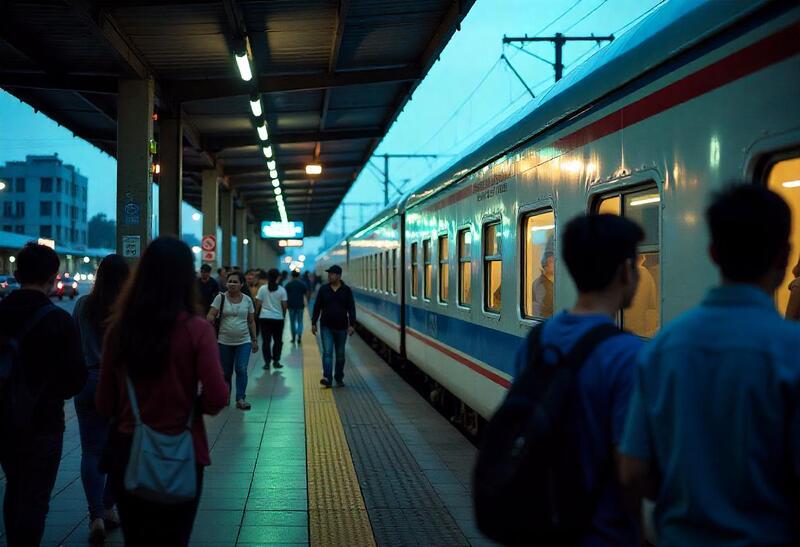Published on October 14, 2025
The Philippines is about to enter a new chapter in its transportation network, with several major train routes set to open in 2026. As the country continues to grapple with growing urbanisation and traffic congestion, these rail projects are expected to play a pivotal role in improving connectivity, reducing travel times, and promoting sustainable mobility. From North to South, the Philippines’ railway network is expanding rapidly, making travel more efficient and reliable. Here’s everything you need to know about the key train routes starting in 2026.
1. North-South Commuter Railway (NSCR) – Malolos to Clark
The North-South Commuter Railway (NSCR) is one of the most ambitious rail projects in the Philippines. Stretching over 147 kilometers, this railway aims to provide seamless travel between the northern and southern parts of Luzon. The Malolos to Clark segment of the project is set to partially open in 2026, with the full operational capacity expected by 2029.
Advertisement
Advertisement
This section of the NSCR will serve 36 stations, spanning from Malolos, Bulacan to Clark, Pampanga. Once completed, it will significantly reduce the travel time between Metro Manila and the Central Luzon provinces, making it easier for commuters to travel between urban and rural areas. The line will also provide a direct link to Clark International Airport, which is expected to boost the region’s economy and encourage more international travelers to visit. The Malolos to Clark railway segment is one of the government’s top infrastructure priorities, contributing to the Build, Build, Build program that aims to modernise the country’s transportation systems.
The NSCR will be equipped with modern train stations, providing comfortable, fast, and efficient service. This development will also ease the burden on the heavily congested EDSA, one of the busiest highways in the capital. The launch of the Malolos to Clark line in 2026 will be a game-changer for travelers in the Bulacan and Pampanga provinces, making it an exciting milestone in Philippine transport.
Advertisement
Advertisement
Travel Tip: If you’re planning to visit the northern provinces in 2026, keep an eye on the Clark railway line, as it will provide quicker access to the airport and other major destinations.
2. Metro Rail Transit Line 7 (MRT-7)
MRT-7 is another major rail project expected to commence operations in 2026. This elevated rapid transit system will connect San Jose del Monte in Bulacan to North EDSA in Quezon City. With a total length of 24.069 kilometers, the line will have 14 stations, making it a critical addition to the region’s growing transit network.
Advertisement
Advertisement
The MRT-7 project is set to relieve traffic congestion along the North EDSA corridor and provide a much-needed alternative for commuters traveling from Bulacan to Metro Manila. The line is designed to handle a high volume of passengers and is expected to significantly reduce travel times for commuters. Currently under construction, the MRT-7 is expected to begin trial runs by the end of 2025, with full operations slated to begin in 2026.
Once fully operational, MRT-7 will provide a high-speed, modern transport option for residents of San Jose del Monte and nearby areas. The project will also enhance the country’s infrastructure development by reducing dependence on private vehicles and providing a reliable, public transport solution for Metro Manila’s growing population.
Travel Tip: If you’re traveling to Quezon City or Bulacan, the MRT-7 will offer an efficient and fast way to bypass the heavy traffic along EDSA.
3. North-South Commuter Railway (NSCR) – Tutuban to Calamba
In addition to the Malolos to Clark section, another key part of the North-South Commuter Railway is the Tutuban to Calamba line. This segment of the NSCR is particularly important for travelers heading to the CALABARZON region, which includes the provinces of Cavite, Laguna, Batangas, Rizal, and Quezon. The Tutuban to Calamba line will be a double-track railway, providing faster, more efficient transportation between Metro Manila and the southern provinces.
The Tutuban to Calamba railway project is currently under construction, with pre-operational tests set to begin in 2026. Full operations are expected to be up and running by 2032. The line will serve key commuter stations in Metro Manila and Laguna, making it easier for residents and workers in the CALABARZON region to commute to the capital. The railway line will also be an essential component of the government’s goal to decongest Metro Manila’s roads by promoting rail-based public transport.
Travel Tip: For travelers visiting Laguna or Cavite, this railway line will offer a quick and convenient connection to Metro Manila and other key destinations in the south.
4. LRT Line 1 Cavite Extension
The LRT Line 1 Cavite Extension is a long-awaited project that aims to extend the existing LRT Line 1 from Baclaran to Bacoor, Cavite. The extension will cover a distance of 11.7 kilometers, and when fully completed, it will significantly improve access between Metro Manila and Cavite. The first phase of the extension, which includes five stations, was inaugurated in November 2024. However, the remaining phases are delayed due to right-of-way issues, with construction expected to resume in 2026.
Despite these delays, the Cavite Extension project remains a critical component of the country’s infrastructure development plans. Once fully operational, it will ease traffic congestion along the Coastal Road and improve access to the Cavite province, which has seen rapid urban growth in recent years. The extension will also connect key residential and commercial areas, making it a convenient option for commuters and travelers alike.
Travel Tip: If you’re heading to Cavite from Metro Manila, the LRT Line 1 extension will offer a faster, more affordable transport option, especially once all phases are completed.
The Future of Rail Travel in the Philippines
As the Philippines continues to grow and modernise, the expansion of the rail network will play a critical role in improving urban mobility and reducing traffic congestion. The launch of these major train routes in 2026 will help alleviate the strain on Metro Manila’s roads and provide alternative transportation options for millions of commuters.
The Philippine government has made significant investments in improving the country’s rail infrastructure, with projects like NSCR, MRT-7, and the LRT Line 1 Cavite Extension poised to transform the way people travel within and outside of Metro Manila. These projects are also expected to enhance the country’s economic development by providing better access to tourist destinations, commercial centers, and business hubs.
Travel Tips for Commuters in 2026
- Stay informed about the progress of rail projects and station openings in 2026.
- Use the train systems to avoid traffic jams and save time, especially during peak hours.
- Always check for service updates on official platforms to ensure a smooth journey.
- If you’re a first-time traveler, consider using ride-hailing apps to connect with stations if you’re unfamiliar with the routes.
Conclusion
The Philippines is on the verge of a transportation revolution with several train routes set to begin operations in 2026. These projects will make commuting faster, more efficient, and more sustainable. As the country embraces its new era of rail infrastructure, both locals and tourists will benefit from the improved connectivity. Whether you’re heading to Clark, Cavite, or Laguna, these new train routes are set to reshape the way people travel across Luzon. Stay tuned for updates as the Philippine railway network continues to expand and evolve in the coming years.
Advertisement
Tags: Cavite to Manila LRT, Laguna train system, Manila to Clark train, new routes, North-South Commuter Railway
Advertisement
Tags: Cavite to Manila LRT, Laguna train system, Manila to Clark train, new routes, North-South Commuter Railway
I want to receive travel news and trade event update from Travel And Tour World. I have read Travel And Tour World’sPrivacy Notice.
Tuesday, October 21, 2025
Tuesday, October 21, 2025
Tuesday, October 21, 2025
Tuesday, October 21, 2025
Tuesday, October 21, 2025
Monday, October 20, 2025
Tuesday, October 21, 2025
Tuesday, October 21, 2025




Leave a Comment